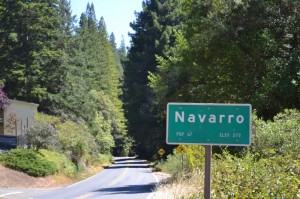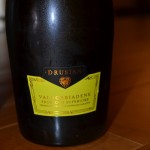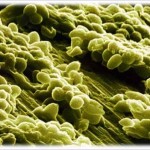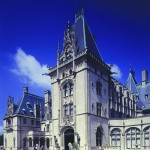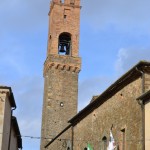Long known for its high quality fortified wines – namely Port and Madeira – Portugal’s reputation for its non-fortified wines was less than stellar. Thanks to a renewed focus on quality, most notably in the wineries themselves, things are changing. The country now has an expanded repertoire of quality wines, which offer diverse styles at excellent values for today’s consumer.
Part of the secret to Portugal’s success is owed to its range of climates. Despite its small size, the country has three distinct zones, which influence the styles of wine that can be produced. Due to its proximity to the Atlantic Ocean, the coastal part of northern Portugal is lush and green with abundant rainfall. Here, temperatures are moderate and humidity is high. Continuing south along the coast, the climate becomes more Mediterranean, with warmer summers, mild winters, and less precipitation. Meanwhile, a series of mountain ranges in the interior blocks the moderating influence of the ocean and the climate becomes decidedly continental and arid. These inland valleys, especially those close to the Spanish border, feature blistering hot summers and very cold winters, with minimal precipitation.
Along with its diverse climate, Portugal has embraced a wide variety of grapes, choosing to rely on native varieties instead of the more internationally known Cabernet Sauvignon and the like. Instead, grapes such as Castelão and Fernão Pires, essentially found nowhere else, dominate the vineyards. Mostly planted in the south, Castelão can produce red wines with complex, herbaceous character, but can also be vinified in a more easy-drinking style. Fernão Pires, alternately called Maria Gomes, is a very aromatic white grape variety, made into dry and dessert, as well as sparkling, wines.
Red grapes take the lead, with two-thirds of all wine production being red. Aside from the aforementioned Castelão, Portuguese reds frequently feature one or more of the preferred Port varieties. Specifically, Touriga Nacional, capable of producing complex wines with firm structure and black fruit; Touriga Franca, with its floral, blackberry and plum notes; and Tinta Roriz, known elsewhere in as Tempranillo, with red fruit, olive and herbal characteristics. Another variety with significant acreage is the extremely tannic Baga grape, which is often aged in older barrels so as not to add additional tannins, yielding wines with robust wines with plum and tobacco notes, capable of aging for a long time.
White grapes are regionally prominent, especially in the cooler areas in the north and on the islands. In Vinho Verde, Loureiro and Alvarinho (synonymous with Loureira and Albariño in Spain’s Rías Baixas) are the stars. Alvarinho is distinctly tart and mineral in character with peach and citrus aromas and flavors, whereas Loureiro offers less acidity and more richness on the palate. Wines can be produced as single varietal wines or several grapes may be blended together. Compared to Rias Baixas wines, Alvarinho-led Vinho Verde is more petillant, mineral and tart.
Regardless of the varieties used, white (red and rosé versions also exist) Vinho Verde is generally low in alcohol, high in acidity with fresh citrus character. Also grown in the Vinho Verde area, as well as in Lisboa, Arinto is known for high acidity, with moderate alcohol and has to potential to age, especially if aged in oak.
With a wealth of wines from which to choose, Portuguese wines might be the perfect thing to help you break your Chardonnay habit. Because, not only is life too short to drink bad wine; it’s too short to get stuck in a rut.
Aveleda Alvarinho 2011, Vinho Verde, Portugal, $11.00
This is always one of my favorites when tasting a range of Vinho Verdes. While a bit pricier than some others, it delivers with floral, nectarine and citrus aromas and flavors. With its high acidity, dry palate and light body, this is a perfect aperitif wine.
Quinta da Romeira Arinto 2010, Bucelas, Portugal, $11.00
This wine hails from the Bucelas denomination, located close to Lisbon. It has notes of citrus, and yeast on the nose. Another relatively light-bodied wine, the palate has high acidity, along with green apples, grassiness and minerality.
Casa Ermelinda de Freitas Dona Ermelinda Reserva 2010, Palmela, Portugal, $13.00
A blend of Castelao (70%), Touriga Nacional (10%), Trincadeira (10%) and Cabernet Sauvignon (10%), this wine spent 12 months in French oak barrels. It offers red berries, perfume, oak and plum on the nose. Its palate provides vibrant acidity, dusty tannins, as well as minerality and an herbal character.
Herdade de la Malhadinha Nova Aragonês da Peceguina 2009, Alentejo, Portugal, $21.00
Unlike Rioja, which relies on Tempranillo, but usually includes at least one blending partner, this wine is 100% Tempranillo (simply masquerading under its Portuguese pseudonym). Showing ripe and jammy black berries, oak, medium tannins and some minerality, this wine seems more new world than old world, but still has nice balance.
Quinta de Vesuvio Pombal de Vesúvio 2008, Douro, Portugal, $27.00
At 803 acres, Quinta de Vesuvio is one of the largest estates within the Douro Valley. This blend of Touriga Franca (55%), Touriga Nacional (35%) and Tinta Amarela (10%) was aged in barrel for 9 months in French oak. It displays black and bramble fruit aromas along with smoky notes, both of which are repeated on the full-bodied palate, and joined by vibrant acidity.

